5 Toilet Flapper Types & How to Choose Them
Author: Omar Alonso | Editor: Omar Alonso
Review & Research: Jen Worst & Chris Miller
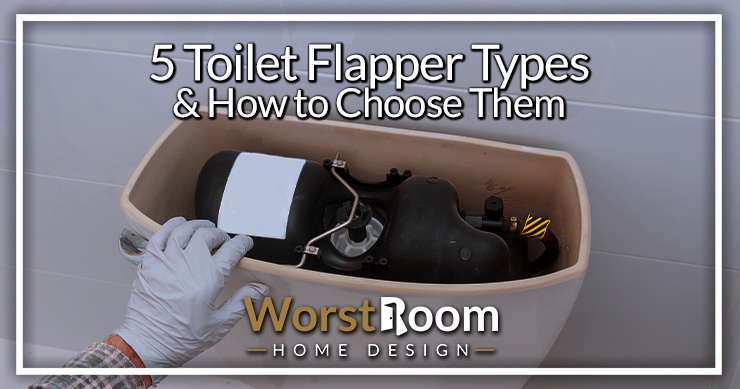
When was the last time you used the toilet? Did you happen to notice the toilet flapper types when you flushed? Probably not, because it sits inside the tank (cistern). However, it's the part that connects to the handle, allowing flushing and refilling of the cistern. It's an integral part of the toilet setup, and you can't operate the system without it.
If the flapper isn't installed correctly, you'll notice problems like noise and water wastage because of leaks and ineffective filling and flushing of the toilet. If you have a problematic flapper, you'll need to know which one is the right model and how to install it correctly.
This post unpacks everything you need to know about toilet flappers. Are you ready for an adventure into the depths of your toilet's plumbing? Alright, let's go!
Toilet Flappers Explained
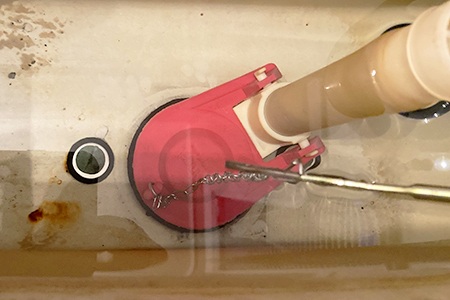
The flapper is the part of the toilet responsible for managing water flow into the cistern, or tank, as it's more commonly known. The flapper allows proper draining from the tank to the water bowl. You lift the toilet handle, and the flapper moves off its seat, sending water to the bowl, where it flushes away waste.
After you finish flushing, the handle returns to its original position, and the flapper reseats itself in the drain and seals the tank allowing it to refill. The toilet handle attaches to a chain or lever arm, lifting when you depress the handle.
It's a simple but vital part of the toilet and is usually a common point of failure. If the flapper stops working properly, it disrupts the proper draining and refilling of the tank.
So, it's common for you to hear running water when the flapper fails. The water leaks out of the system and into the bowl. Not only is this sound annoying, but it's costing you money and flushing away valuable water resources.
5 Toilet Flapper Types
There are several manufacturing companies producing toilet flapper types for your toilet. Typically, they come in three designs with additional features on some: seat disk flappers, tank ball flappers, and rubber flappers. Each flapper system has a different operating mechanism, and not all have a universal fit to most types of toilets.
You'll need to know which flapper system your toilet uses, or you might buy the wrong equipment. Open the tank lid and take a picture of the flapper on your phone. Compare it against the different flapper types and figure out which model you have.
If you're going to the hardware store to buy a new one or shopping for the flapper online, having a picture of the correct flapper on your phone prevents you from buying the wrong one.
Seat Disk Flapper
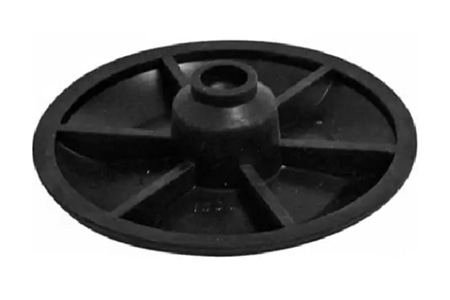
You'll find a flat, round rubber disk covering the overflow pipe at the base of the toilet flapper. This piece of rubber stops water from entering the overflow pipe. When you flush the toilet, the flapper opens and permits the passage of water through the drain to the bowl.
This seat disk flapper design is a common model but has some limitations. These models are substantial in size and take up a lot of room in the tank. This design works well and also helps conserve water since there's less water going into the tank, consuming fewer water resources.
However, it has the problem of not effectively flushing the toilet. As a result, you might get a clog in the line because there's not enough water moving through the pipes, or you might have to flush more than once to clear the system. Most clogs clear themselves so you may not even notice before returning to the bathroom again. These flappers are also challenging to replace.
Tank Ball Flapper
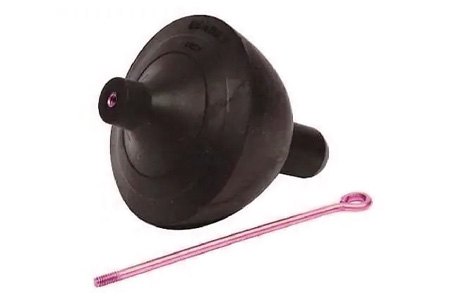
The tank ball flapper is the most common design in older toilet models. These toilet flapper types feature a tank ball attached to a lifting wire which relaxes when you let go of the handle to seal the flush valve. When you flush the toilet, the wire pulls upwards, releasing the ball from the flush valve.
Water flows down through the flushing valve into the toilet bowl. The problem with this system is the tank ball. It loses shape over time, or water penetrates the ball, causing it to sink lower, creating a poor seal resulting in water running continuously into the tank and the bowl.
Basic Rubber Flapper
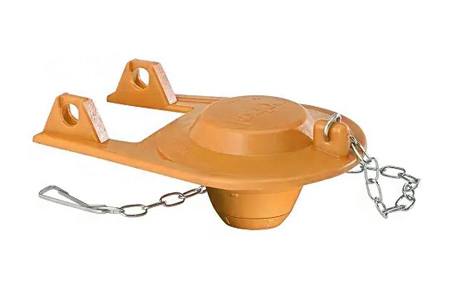
The rubber flapper is the most common toilet flapper model in the world. This flapper works like a tank ball flapper. When you flush the toilet, there's a chain lifting the flapper that allows the water to flow through the flush valve.
Some rubber flappers feature construction with silicone or rubber and are flexible. However, most of these models feature a hard plastic design for the ball, with a silicone or rubber seal on the bottom. Rubber types of toilet flappers are the most affordable of the three types, hence their widespread use in plumbing applications.
Rubber Flapper with a Floater
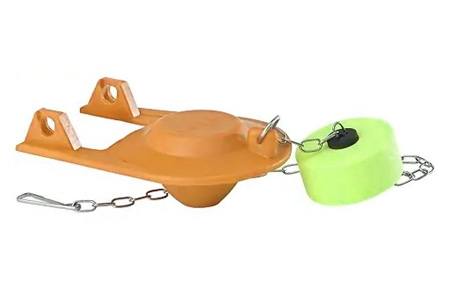
Rubber flappers depend on the water pressure above them to eventually close them again once the pressure of the water beneath them from the water flowing into the pipe is low enough. This works okay but with the addition of a floater, which is a buoyant piece of plastic, you can adjust the flapper to your particular liking.
The floater attaches to the chain (that attaches to the flush handle). By attaching the floater higher or lower on this chain, you can control how long the flapper stays open during a flush. This allows you to use less water or to use more water if you feel you need a stronger flush.
When the toilet water rises and then drains over and over, you probably have a clog but it's the floater causing the water to drain over and over, which is a good thing. Otherwise you'd have an overflowing toilet on your hands.
Rubber Flapper With a Control Dial
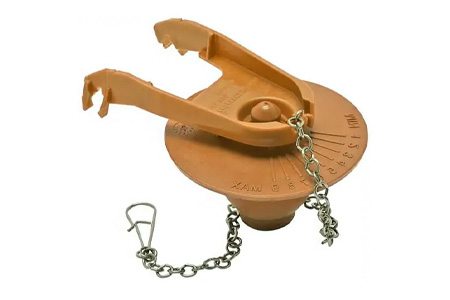
These flappers are built to provide the same benefit as the floater option above but without a floater. Instead, it resembles a basic rubber flapper but has a control dial. This dial has a piece on top as well as a legend so that you can turn the dial to select how strong of a flush (and therefore how much water) you want to use.
The way it works is the dial lets you adjust how much of the air that enters the cone escapes once water starts re-entering it. It works like a built in floater inside of the flapper itself, letting you choose how long the valve stays open with a more intuitive adjustment method with less trial and error.
How Do I Choose the Right Size Toilet Flapper?
All the toilet flapper types come in different sizes. The best way to check on the right size flapper for your toilet is to look at the flush valve at the bottom of the tank. Toilets vary in design, size, and shape, so there's no universal toilet flapper model or size that fits all toilets.
Flappers typically come in two or three-inch sizes, with two-inch models being the most common size for older toilets and modern toilet designs favoring the three-inch version. Measure the flush valve system to ensure you have the right size requirement before ordering your new flapper.
You can also eyeball the ball to see which size flapper you need. Usually, a flush valve system the size of a baseball requires a 2-inch flapper, while balls the size of a softball require a 3-inch model.
You can always turn the water off to the toilet, take the current flapper out, dry it off, and take it with you to the store to compare with other options or have a store associate help you find the proper replacement.
Common Reasons Why Toilet Flappers Fail
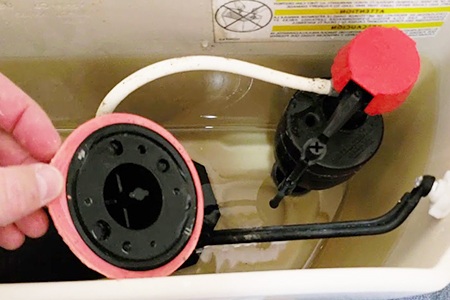
Since the flapper sits out of sight, most homeowners never give it a second thought. We'll flush the toilet thousands of times and only consider the flapper when something goes wrong with the system.
There are plenty of reasons why the different flappers for toilets fail. Here are the most common causes of flapper malfunction and what to do about it.
Caustic Chemicals
If you have a public restroom facility at a bar or restaurant, and the toilet starts running, there's something wrong with the flapper. Most public facilities add caustic chemicals to the cistern to clean out the unit and sterilize the water, adding more cleaning power to every flush through the system.
The chemicals added to the cistern can interact with the rubber and silicon parts in the ball and flapper, causing them to fail. There's a simple way to test the flapper to see if it needs to be fixed. Pour a bit of blue food coloring into the tank and see if you notice the water leaking into the toilet bowl when the handle is fully raised and closed.
If there's blue water in the tank, your toilet flapper types aren't sealing correctly, allowing the water to leak into the bowl while the handle is fully closed.
Wear & Tear
Normal wear and tear of the flapper components is the most common reason for the unit's failure. The float and the flap feature design and construction with flexible materials like plastic or rubber. This material breaks down and cracks over time.
To determine if this is the problem with your flapper, try to estimate when you last replaced it. If it's older than five years, you probably need a replacement.
Bacteria, Mold, & Mildew
Your toilet flapper sits in a dark, wet tank, providing the perfect conditions for mold and mildew growth. If these pathogenic microorganisms enter the cistern and multiply, they usually cause cracking or improper fitting of the seals around the flush valve.
Hard Water Build Up
Over time, hard water will leave deposits that only grow larger and harder, made up of magnesium, iron, and calcium. These minerals are corrosive, especially to rubber and plastic, and add weight to the flapper. So not only may they develop slow leaks and gaps in their seals, but their weight may become high enough to close too early and give you weaker flushes.
FAQ’s Regarding the Toilet Flapper Types
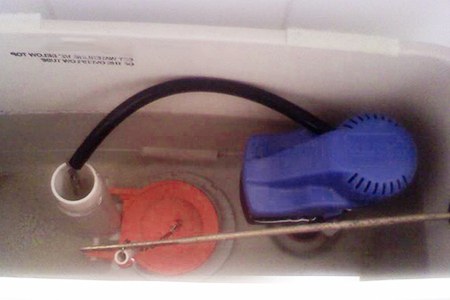
When the topic of all the toilet flapper styles comes up, there’s several other questions that are always asked, so lets go ahead and answer those now.
How Long Do Toilet Flappers Last?
You'll typically get a five-year service life out of a toilet flapper. However, if you use strong chemicals in the system at a public venue, you'll reduce that service life.
How Do I Know When to Replace the Toilet Flapper?
Flappers only last five years; after that, they'll start to show signs of dysfunction. You'll know it's time to replace your flapper when you notice the following signs of a malfunction in your toilet:
- Improper flushing of your toilet, either weakly or too strong
- Strange noises come from the toilet during and after flushing
- The toilet has water running into the bowl, even when the handle is closed
- Your toilet develops leaks, though could be your toilet flange types needing replacing
- Can contribute to the toilet water rising and then draining slowly
If you aren’t experiencing these problems, but can tell the flapper is brittle and going to break soon, you can go ahead and replace it. It’s not an expensive or difficult procedure.
Why Do I Have to Frequently Replace My Toilet Flapper?
Expect to replace your toilet flapper every five years. If you're replacing your flapper in intervals sooner than five years, it might be because you're using cleaning agents in your cistern, or you have the wrong size or type of flapper installed in the tank.
The Different Types of Toilet Flappers for a Perfect Flush
Toilet flappers play a vital part in the system and are a common point of failure. Advancements in design and manufacturing mean flappers are getting more resilient to operation and lasting longer.
However, you'll need to check on your toilet flapper types every five years and replace the flapper when you notice signs of dysfunction. Flappers are readily available for your hardware store or from online retailers. Just ensure you know what size and types of toilet flappers you need for your toilet.



